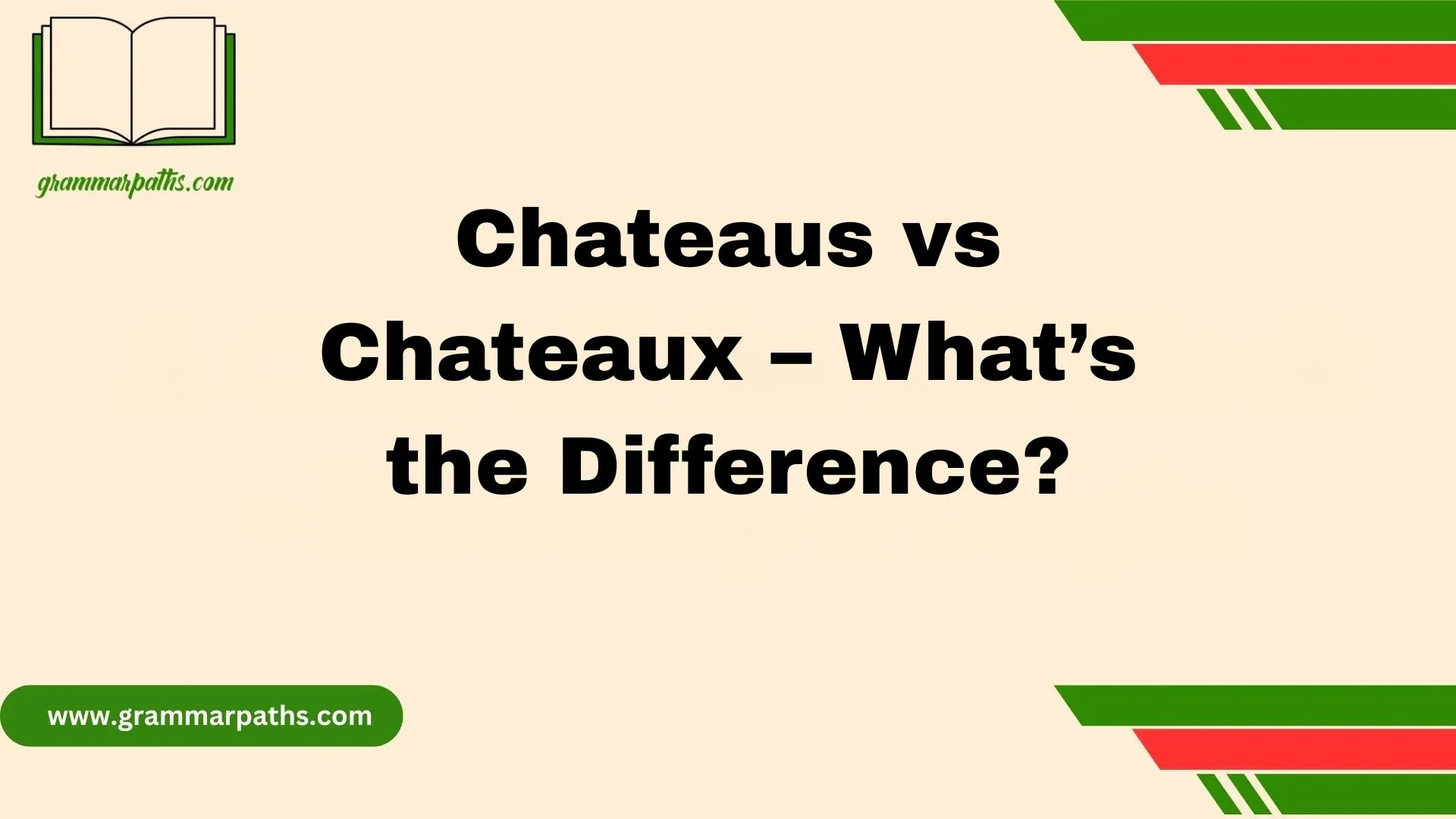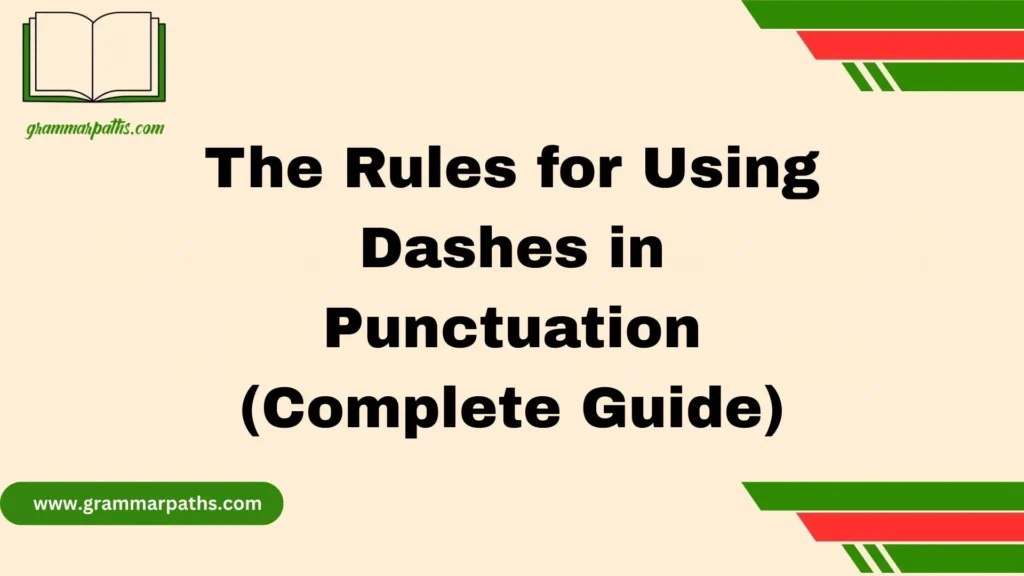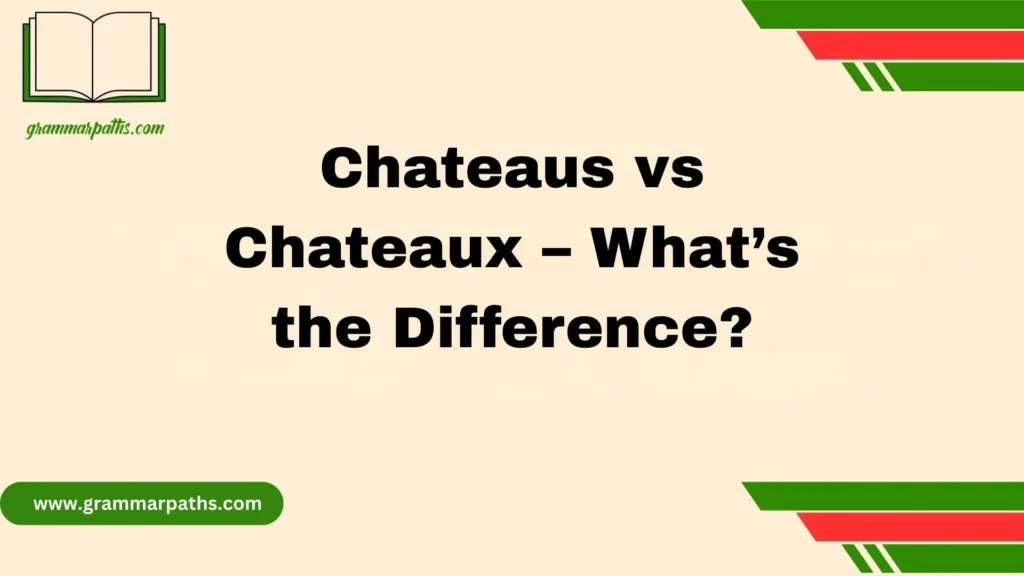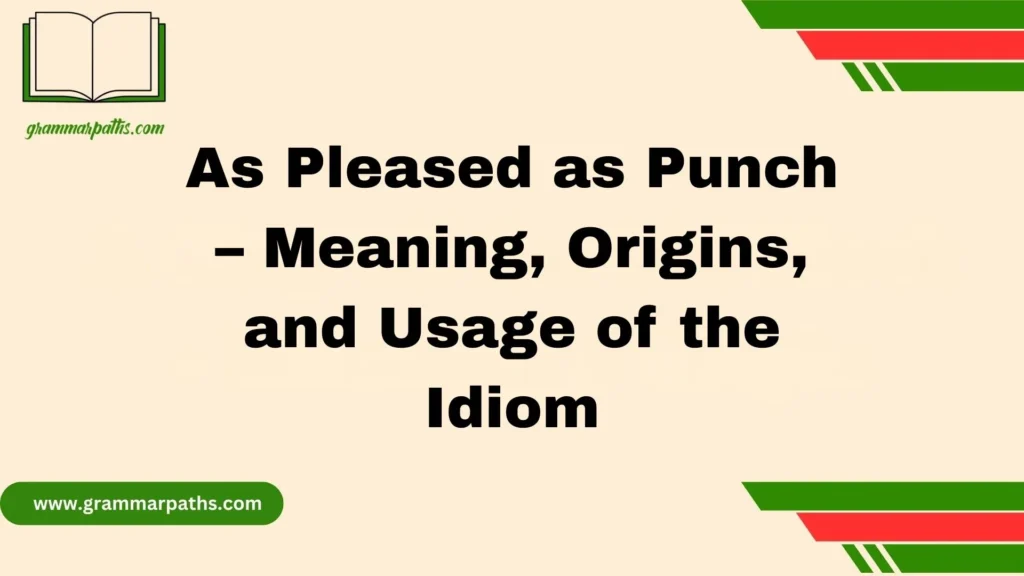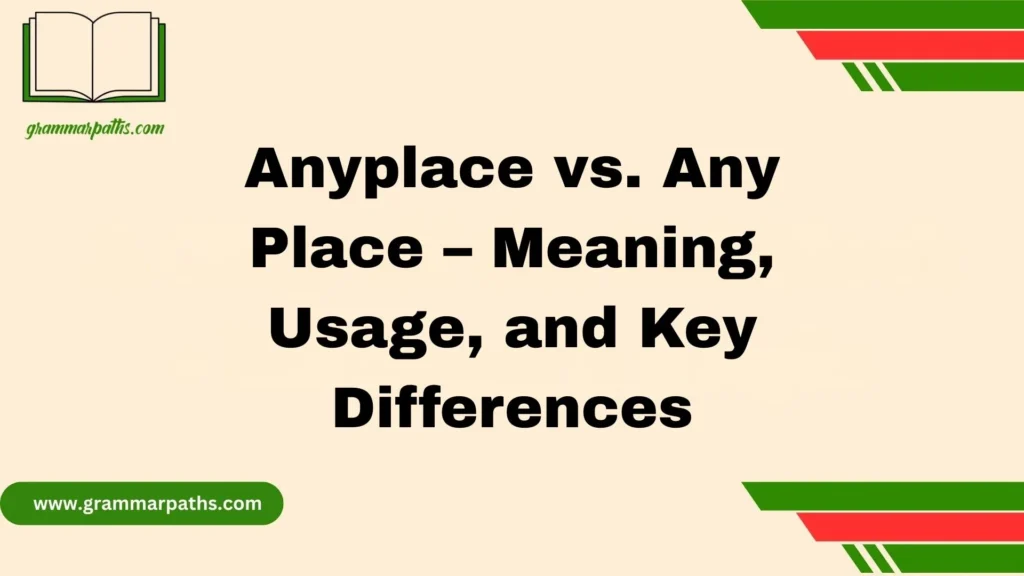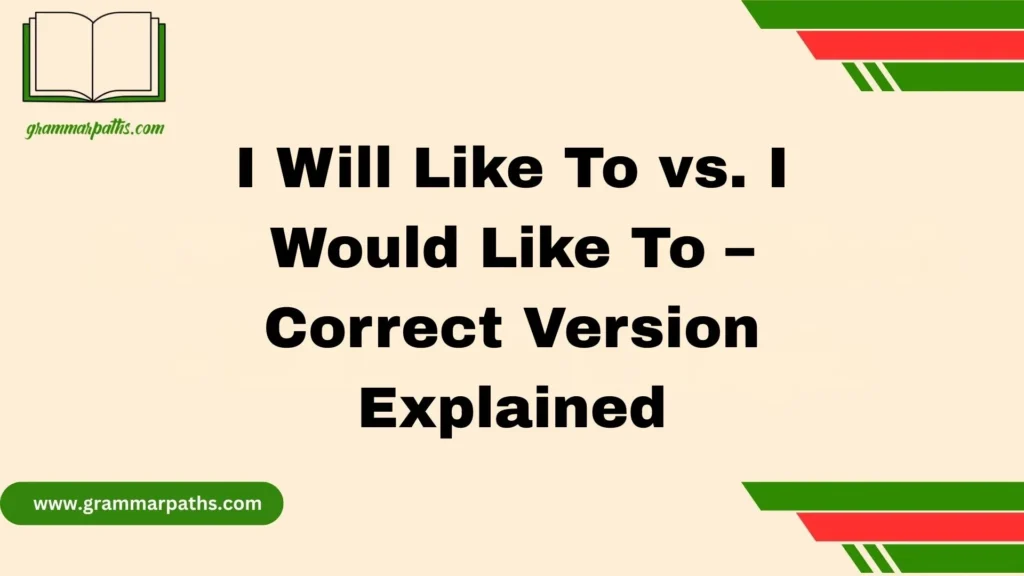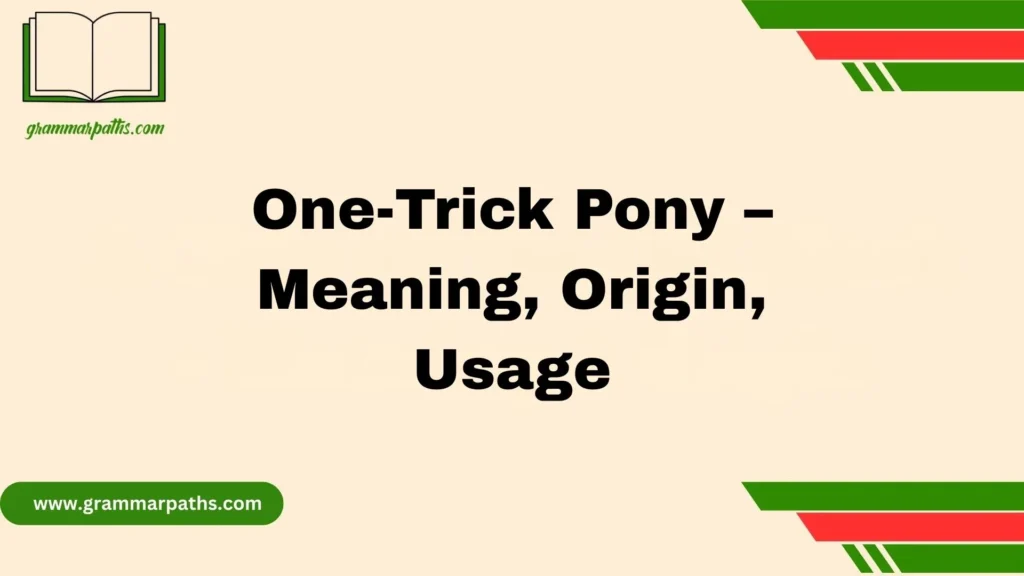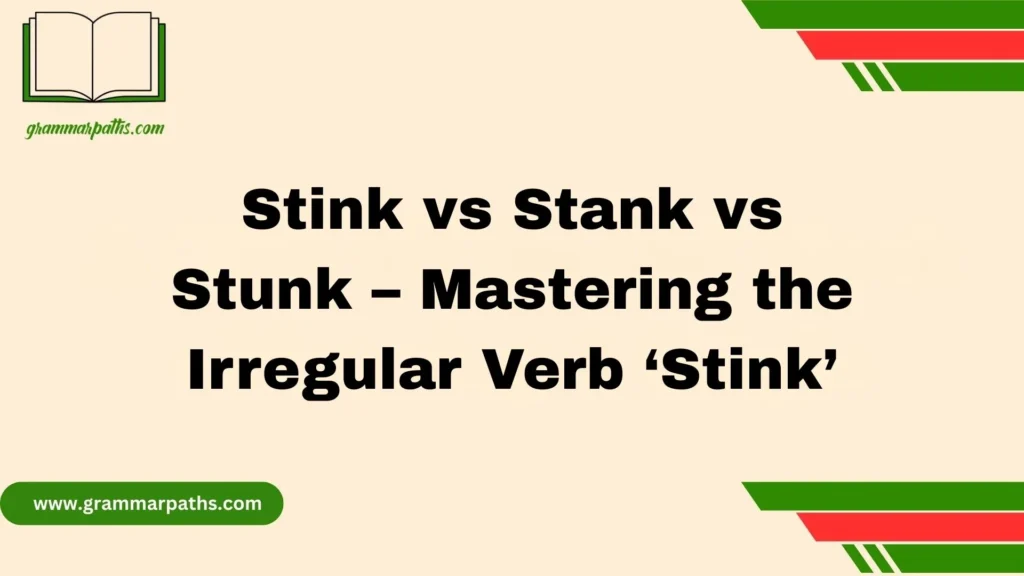When it comes to French-inspired architecture, the terms chateaus and chateaux often leave people confused. Both words stem from the French word “château,” which refers to a castle, manor, or grand estate. However, the main difference lies in language, spelling, and usage. In English, “chateaus” is the commonly accepted plural form, while in French, the correct plural is “chateaux.” This subtle distinction highlights how words can change when borrowed across languages.
A château is more than just a castle or palace—it represents history, luxury architecture, and often ties to French nobility or wine estates. In modern English, writers and travelers may use chateaus for simplicity, especially when describing estates outside of France. On the other hand, chateaux is still favored in contexts tied closely to French heritage, vineyards, or historical references.
Understanding the difference between chateaus vs chateaux not only clarifies proper usage but also connects you to the cultural richness behind the term. Whether you’re exploring European castles, reading about French wine country, or writing about luxury real estate, knowing which form to use ensures both accuracy and elegance in communication.
Understanding the Term Château
The word château is French, but its story begins long before the modern French language.
- Etymology: It comes from the Latin castellum, meaning “castle” or fortified place. This evolved into Old French chastel during the Middle Ages. Eventually, it took the form we know today: château.
- Meaning in French: In France, the word covers a wide range of buildings. It can mean a medieval castle, a grand Renaissance palace, a nobleman’s country estate, or even a modern vineyard’s estate house.
- Meaning in English: When borrowed into English, the word narrowed a bit. In English, château usually means either a French-style castle or a luxurious country mansion, often associated with wine regions like Bordeaux.
Here’s a quick side-by-side comparison:
| Context | Meaning | Example |
| French | Any large residence, palace, estate, or vineyard house | Château de Versailles (palace), Château Margaux (wine estate) |
| English | Grand castle-like mansion, often French-inspired | “The Loire Valley is known for its many chateaux.” |
So, while château in France can mean everything from a medieval fortress to a wine label, in English it almost always refers to castles or stately residences.
Plural Forms: Chateaus vs Chateaux
This is the heart of the matter. Should you write chateaus or chateaux? Both exist, but context decides which is best.
English Plural Rule: Chateaus
In English, most nouns form their plural by simply adding “-s.” By this rule, chateau → chateaus. This form is widely accepted in everyday English writing, especially in American English.
French Plural Rule: Chateaux
In French, nouns ending in “-eau” form their plural with “-eaux.” That’s why château becomes châteaux. When English borrowed the word, it brought along this French plural as well.
When to Use Each
- Chateaus: Use in casual writing, travel blogs, or when your audience may be less familiar with French spelling. Example: “We visited three beautiful chateaus in the Loire Valley.”
- Chateaux: Use in formal, academic, historical, or cultural contexts where French accuracy matters. Example: “The châteaux of the Loire Valley reflect centuries of aristocratic history.”
What Dictionaries Say
- Merriam-Webster: Accepts both chateaus and chateaux.
- Oxford English Dictionary: Lists chateaux as the preferred plural but acknowledges chateaus.
- Cambridge Dictionary: Notes that chateaux is the French plural but says chateaus is also correct in English.
In short: both are correct, but chateaux carries more cultural weight.
Examples in Real Usage
Looking at real-world examples shows how writers choose one form over the other.
- Literary Example: “The châteaux of France stand as monuments to wealth and ambition.” (Formal tone, French spelling used.)
- Journalism Example: “American billionaires are building chateaus in the Rockies.” (Anglicized spelling, casual tone.)
- Travel Writing Example: “We spent our summer touring the Loire Valley’s châteaux.”
- Wine Industry Example: “The châteaux of Bordeaux produce some of the world’s finest wines.”
Common mistake: Some writers think chateaus is wrong, but it isn’t—it’s just the English version.
The Architecture and Features of a Château
To fully appreciate why the plural matters, you need to know what makes a château so distinctive.
Historical Evolution
- Medieval Period – Fortified castles with defensive walls, moats, and keeps. Examples: Château de Fougères, Château de Carcassonne.
- Renaissance – A shift from military to luxury. Châteaux became palatial estates with gardens, symmetry, and grand halls. Example: Château de Chambord.
- 17th–18th Centuries – Absolute monarchy and aristocracy built lavish residences, like Château de Versailles, a symbol of royal power.
Key Architectural Elements
- Towers and turrets for both defense and style.
- Wide moats or reflecting pools.
- Ornate facades with sculpted stonework.
- French formal gardens (symmetrical, geometric layouts).
- Interiors with ballrooms, chapels, libraries, and vast staircases.
Regional Variations
- Loire Valley: Renaissance masterpieces with river views.
- Île-de-France (near Paris): Royal and aristocratic palaces.
- American Adaptations: Wealthy families in the 19th–20th centuries built French-style “chateaus” in places like Newport, Rhode Island, and Beverly Hills.
Modern Interpretations of the Château
Today, the word château isn’t limited to history books. It lives on in business, travel, and everyday language.
Wine Industry
In Bordeaux and Burgundy, vineyards often brand themselves as “Château + Name.” For example: Château Lafite Rothschild or Château Margaux. Here, “château” doesn’t just mean a building—it means the estate producing wine.
Tourism & Hospitality
Many French châteaux are museums, hotels, or event spaces. In the U.S., luxury resorts often use the name “chateau” to suggest elegance. Example: Fairmont Le Château Frontenac in Quebec City, though in Canada, not France.
American Adoption
In American real estate, large mansions are sometimes described as “chateaus” for prestige. Think of sprawling Beverly Hills estates styled after French architecture.
Cultural Symbolism
The château symbolizes romance, history, and luxury. Writers and filmmakers use it as shorthand for old-world elegance.
Chateaus vs Chateaux – Quick Reference Guide
Here’s a side-by-side comparison to clear things up fast:
| Form | Language Rule | Usage Context | Example |
| Chateaus | English plural | Informal, casual, American English | “They bought two chateaus in the countryside.” |
| Chateaux | French plural | Formal, cultural, historical, academic | “The Loire Valley’s châteaux attract millions of tourists.” |
Tip: When in doubt, use chateaux if your audience expects sophistication or cultural depth.
Common Misconceptions and Mistakes
- “Chateaus” is wrong.
Incorrect: Only chateaux is correct.
Correct: Both chateaus and chateaux are correct, but the latter is more formal. - All châteaux are castles.
In reality, many châteaux were not defensive fortresses but country estates or wine houses. - Vineyards with “Château” have castles.
Not always. In Bordeaux, “château” on a wine label refers to the estate, not a literal castle.
Conclusion
The difference between chateaus vs chateaux may seem small, but it carries cultural and linguistic significance. Chateaus is the standard English plural, while chateaux reflects the original French plural spelling. Both refer to grand estates, castles, or manors, yet their usage depends on context. If you’re writing in English and want simplicity, use chateaus. If you’re referencing French culture, wine estates, or historical castles, then chateaux is the more authentic choice.
By understanding this subtle distinction, you can communicate with accuracy, elegance, and cultural awareness—whether you’re exploring French vineyards, studying architecture, or discussing luxury properties.
FAQs
Q1: What does château mean in English?
A château means a castle, manor house, or large estate, often linked to French nobility or vineyards.
Q2: Is “chateaus” wrong to use?
No, chateaus is the correct English plural form and is widely accepted.
Q3: When should I use “chateaux”?
Use chateaux when referencing French estates, historic castles, or when you want to keep the authentic French spelling.
Q4: Are chateaus and castles the same?
Not exactly. While some châteaux are castles, others are luxurious country houses or wine estates rather than fortresses.
Q5: Which is more common in writing?
In modern English, chateaus is more common, while chateaux appears in cultural, historical, or French contexts.

Grace Marie is the dedicated writer behind GrammarPaths.com, where she shares her passion for English grammar, idioms, and writing mastery. With a strong background in language studies and years of experience helping learners improve their communication skills, Grace creates clear, practical, and engaging content that makes English easy to understand.
